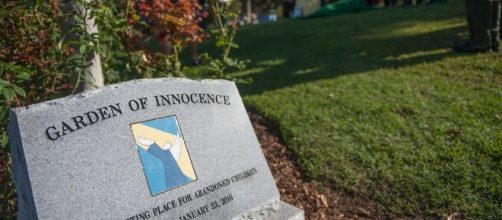Edith Howard Cook was age two when she died of illness on October 13, 1876 -- just weeks shy of her third birthday. She was sick with a disease her immune system couldn’t battle, according to Jelmer Eerkens, a professor at UC Davis. He assisted with DNA testing and also said the little girl had marasmus -- a term used in the 1800s to describe severe malnutrition most liked caused by an infectious disease in urban living at the time. She probably went into a coma and died, according to Eerkens.
How the child’s body was discovered
Construction workers excavating the San Francisco backyard of Ericka and John Karner in May 2016, hit the child’s small coffin with a shovel.
The Karner’s home, in the Richmond District of the city, sat atop the old Independent Order of Odd Fellows Cemetery.
In the early 1930s, an estimated 30,000 people buried at the old cemetery were exhumed and transferred to Greenlawn Memorial Park, which is in Colma, CA. It is unknown why the little girl’s 37-inch glass and metal casket was left behind, but the medical examiner’s office in San Francisco told the Karner’s that they were responsible for the child’s body as it was discovered on private property.
Child’s reburial held in 2016
Last year, the little girl’s reburial was held in Colma on June 14 and it was spearheaded by the nonprofit Garden of Innocence Project after the Karner’s, not knowing what to do, contacted the group though the Office of the Public Administrator.
The organization’s founder, Elissa Davey, who is also a genealogist, launched the endeavor to identify the child through her remains which had been buried in the Yerba Buena section of the old cemetery.
Approximately 140 people attended the service for the child nicknamed “Miranda Eve,” which derived from the Public Administrator, who chose the name “Eve” while the Karner’s two daughters selected the name “Miranda.”
The process to identify the little girl
Davey said that her organization fell in love with the little girl and wanted her to have her name back. “She deserved that.” Davey’s group arranged for the process of identification to commence with a forensic exam, DNA saliva and hair strand analysis.
In sum, 34 experts volunteered: anthropologists, genealogists, and historians from UC Santa Cruz and UC Davis. The team devoted over 1,000 hours reviewing maps of the cemetery, as well as combing through city records and documents
Eventually, the little girl’s possible identity narrowed after researching the histories of families to find the most probable candidates and living descendants. Two likely candidates gave DNA -- one gave hair and the other gave saliva. The University of California, Santa Cruz analyzed DNA from the hair strand of Peter Cook, a direct descendant of the little girl. Cook, who lives in Marin County, is the grand-nephew of Edith Howard Cook, whose casket was found in May 2016.
Little girl had ornate burial in 1876
Edith’s family was financially well-off and her burial was elaborate. When her casket was found, the little girl was still clutching a red rose. In preparing her for reburial, a mortician examined the casket’s contents and said that she was buried in a white christening dress with hand-sewn lace work. When her casket was opened, according to Peter, his great-aunt’s well-preserved body “deteriorated within minutes.”
A public memorial service is scheduled for Edith Howard Cook on June 10, 2017, at Greenlawn Memorial Park in Colma, CA.


